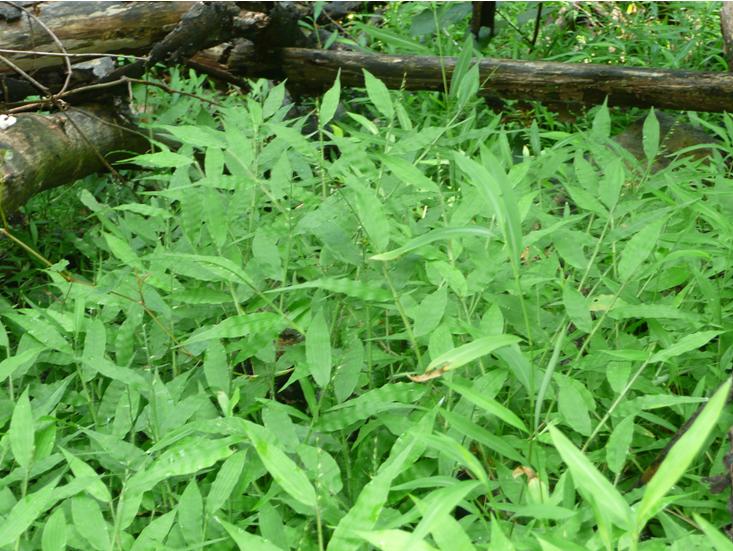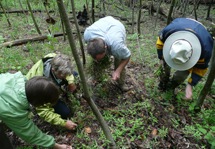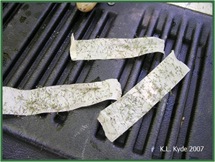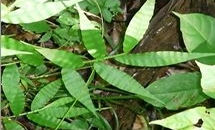Removing Wavyleaf Basketgrass
Stay on Trails
Check Yourself, Pets, and Horses for Seeds
Report All Sightings
Removing Wavyleaf Basketgrass

- Wavyleaf basketgrass is easily hand-pulled. Carefully pull up full plants (roots and stems), then hang them on branches to dry out. This effectively kills the plant.
- If using herbicides, always follow all directions on product labels. Your local Virginia Cooperative Extension office can offer further information on which herbicides are appropriate to use on a given patch.
- Learn more details about hand-pulling and herbicide treatment.
- If in doubt, feel free to ask for help from any of the task force members.
Wavyleaf basketgrass typically blooms between late July and September
Stay on Trails

Wavyleaf basketgrass is spread by its very sticky, tiny seeds sticking to mammals—those mammals might be people, horses, dogs as well as wildlife. The most important time to avoid entering a wavyleaf basketgrass patch is typically late July-September, when the plant is blooming and producing sticky seeds.
In addition, staying on the trail benefits you and the environment in many ways, any time of year.
- Staying on trails also helps protect sensitive species from being trampled.
- Even when no wavyleaf basketgrass is present, other invasive plants may take advantage of people and animals passing by to spread seeds. Staying on trails reduces that impact.
Use tape to remove the sticky seeds from boots, clothing and pets.
Check Yourself, Pets, and Horses for Seeds

- Always clean animals, boots, and clothing when in an infestation of wavyleaf basketgrass. If possible, remove the seeds while on-site to avoid unknowingly spreading them further.
- If you use tape, place it in a bag or other container to keep seeds contained. Burn or otherwise destroy the tape. Simply throwing away tape with wavyleaf basketgrass seeds can result in unknowingly spreading the seeds.
Report All Sightings
If you spot wavyleaf basketgrass, be sure to report it at EDDMapS.org

- Keep an eye out for wavyleaf basketgrass near trails, in the woods, and in parks. If possible, mark the patch in some way, make note of the GPS location or any geographical landmarks that could help identify the location later.
- All sightings of wavyleaf basketgrass should be reported.
- If you discover wavyleaf basketgrass on public land or land that isn’t yours, immediately report it to the owner or managing agency.
